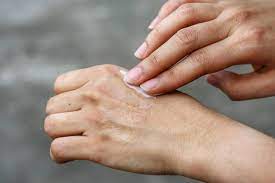Eshealthtips.com – There are many types of skin lesions, from benign to cancerous. Let’s review some of the most common types. A bulla is an elevated fluid-filled area, typically more than 0.5 centimeters in diameter. It is caused by cleavage at different levels of the skin. The walls of a bulla are usually see-through, and the fluid within may be blood or serum. Lesions that are less than 0.5 centimeters in diameter are called papules.
Benign Skin Lesions are Generally Harmless
Benign skin lesions are generally harmless and do not require treatment. They may develop at birth, during childhood, or later in life. Identifying a skin lesion depends on its appearance and the patient’s history. Benign lesions may require treatment if they are causing discomfort or being bothersome. Treatment can range from cryotherapy to surgical removal and excision. Some lesions may be cancerous, and some of them may need to be removed or retreated surgically.
Benign skin lesions tend to be symmetrical and uniform in appearance. They usually increase slowly over time. Premalignant skin lesions have a higher risk of escalating into a malignant condition. Actinic keratosis and Lentigo Maligna are two common types of skin lesions that develop after prolonged exposure to the sun. Benign lesions tend to occur on the face and can be the result of unprotected sun exposure.

Some people experience skin lesions as a result of a systemic infection. Viruses like the herpes simplex virus can cause a variety of skin lesions on different parts of the body. Common types of warts, which are usually caused by contact with infected blood, can also result in a variety of skin lesions. Some lesions are caused by systemic infections such as MRSA or bacteremia.
Some Types of Lesions That Can Be Treated At Home
Most skin lesions are harmless, but sometimes further testing is necessary. A doctor may perform blood tests, allergy tests, and microbiological investigations of skin lesions. If the diagnosis is unclear or there is a suspicion of malignancy, a skin biopsy may be necessary. Treatment of skin lesions varies greatly, depending on the type. Some skin lesions can be easily treated at home with topical medication, and many people do not even need to visit a doctor to have them removed. Some types of skin lesions may require surgical removal.
Skin cancers are categorized according to their severity. Skin lesions that are malignant are usually cancerous and are characterized by their rapid growth or change in color or size. Some of these conditions are also accompanied by warning signs. They can be single, multiple, or widespread and require a biopsy for a definitive diagnosis. They may appear as tiny bumps or even as a lump or sore on the skin.

Treatment for skin lesions will depend on the type and underlying cause. Topical medications are often prescribed for mild symptoms such as pain, burning, or itching. Infected skin lesions may require surgery, which will provide a permanent solution. Sometimes, doctors recommend laser surgery to remove birthmarks. However, if a treatment is unsuccessful, a physician may suggest a home remedy. This will also relieve the itching and burning and can help prevent further skin damage.
Signs of Papule Skin Lesion Type
A skin lesion that is elevated and has a dark color is called a papule. Typically, they appear on the cheeks or forehead. Despite their name, papules are harmless and do not require treatment. But if they persist for longer than expected, they could be signs of an underlying illness. It is important to remember that many types of skin lesions are caused by different factors. For example, some skin lesions are caused by the same virus. If you have a rash that has been caused by a virus, you could have dermatitis or impetigo.
A nodule is a solid, elevated lesion that extends deeper into the dermis than a papule. Depending on their location, nodules may be elevated above the surrounding skin. Small lipomas are benign tumors that are composed of mature fat cells. Nodules may be infected with cancer. If this is the case, your doctor will recommend treatment. Your doctor can perform a skin lesion biopsy to confirm the diagnosis.

Pustule: A pus-filled lesion, a pustule may be the result of an infection or injury in the upper papillary dermis. A pustule is characterized by redness, swelling, and pain. Sometimes, an abscess may rupture into adjacent tissue or outside the body. Then it is time to make an appointment with a dermatologist. If it is large enough, a doctor may prescribe antibiotics or a topical ointment to relieve the symptoms and promote healing.
Reference: